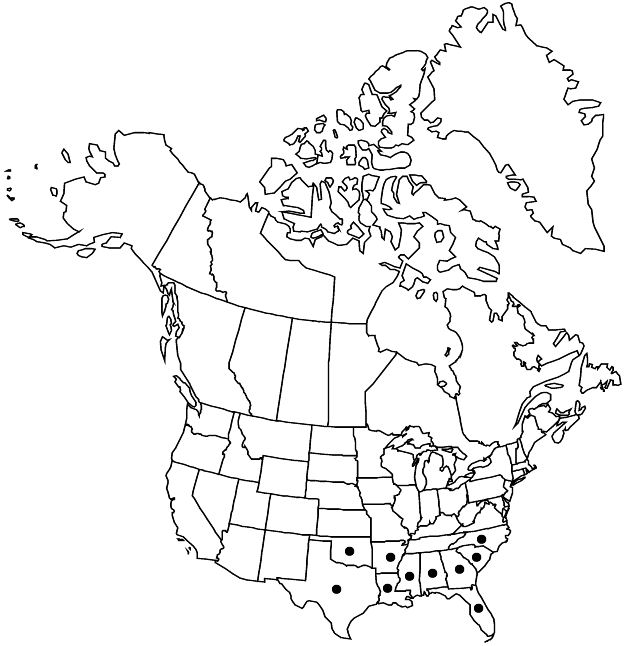Crocanthemum georgianum
in J. K. Small, Man. S.E. Fl., 879. 1933.
Herbs or subshrubs. Stems from caudices and elongate horizontal rootstocks, erect or spreading, (10–) 15–30 (–40) cm, stellate-tomentose. Leaves usually basal mat-forming or sometimes absent and cauline; petiole 1–2 mm; blade spatulate to oblanceolate, 10–28 × 5–11 mm, surfaces stellate-pannose, without simple hairs; cauline: petiole 1–3 mm; blade oblanceolate to narrowly elliptic, 20–40 × (2–) 4.5–9 (–12) mm, surfaces stellate-tomentose abaxially, stellate-pubescent adaxially, without simple hairs; lateral-veins raised abaxially. Inflorescences terminal, racemose cymes; flowers (chasmogamous or cleistogamous) 2–7 per cyme, produced simultaneously. Pedicels 5–12 mm; bracts 1.2–5 × 0.3–1 mm. Chasmogamous flowers: outer sepals linear, 1.5–3.5 × 0.3–0.5 mm, inner sepals 3.6–6.6 × 3–4.5 mm, apex acute; petals obovate, 6–10 (–12) × 4–8 (–11) mm; capsules 3.8–5.7 × 3.2–4.5 mm, glabrous. Cleistogamous flowers: outer sepals linear, 1.4–2.2 × 0.3 mm, inner sepals ovate, 3–4.2 × 2.6–3.8 mm, apex acute; capsules 3–4.2 × 2.4–3.3 mm, glabrous.
Phenology: Flowering Apr–Jun.
Habitat: Dry, sandy oak-pine woods, turkey oak sandhills, stable maritime dunes, maritime woodlands
Elevation: 0–600 m
Distribution

Ala., Ark., Fla., Ga., La., Miss., N.C., Okla., S.C., Tex.
Discussion
Basal leaves occur often enough in Crocanthemum georgianum to be very useful for identification; in the eastern United States only C. carolinianum also regularly has basal leaves. Plants of maritime situations tend to be shorter than inland plants.
Selected References
None.